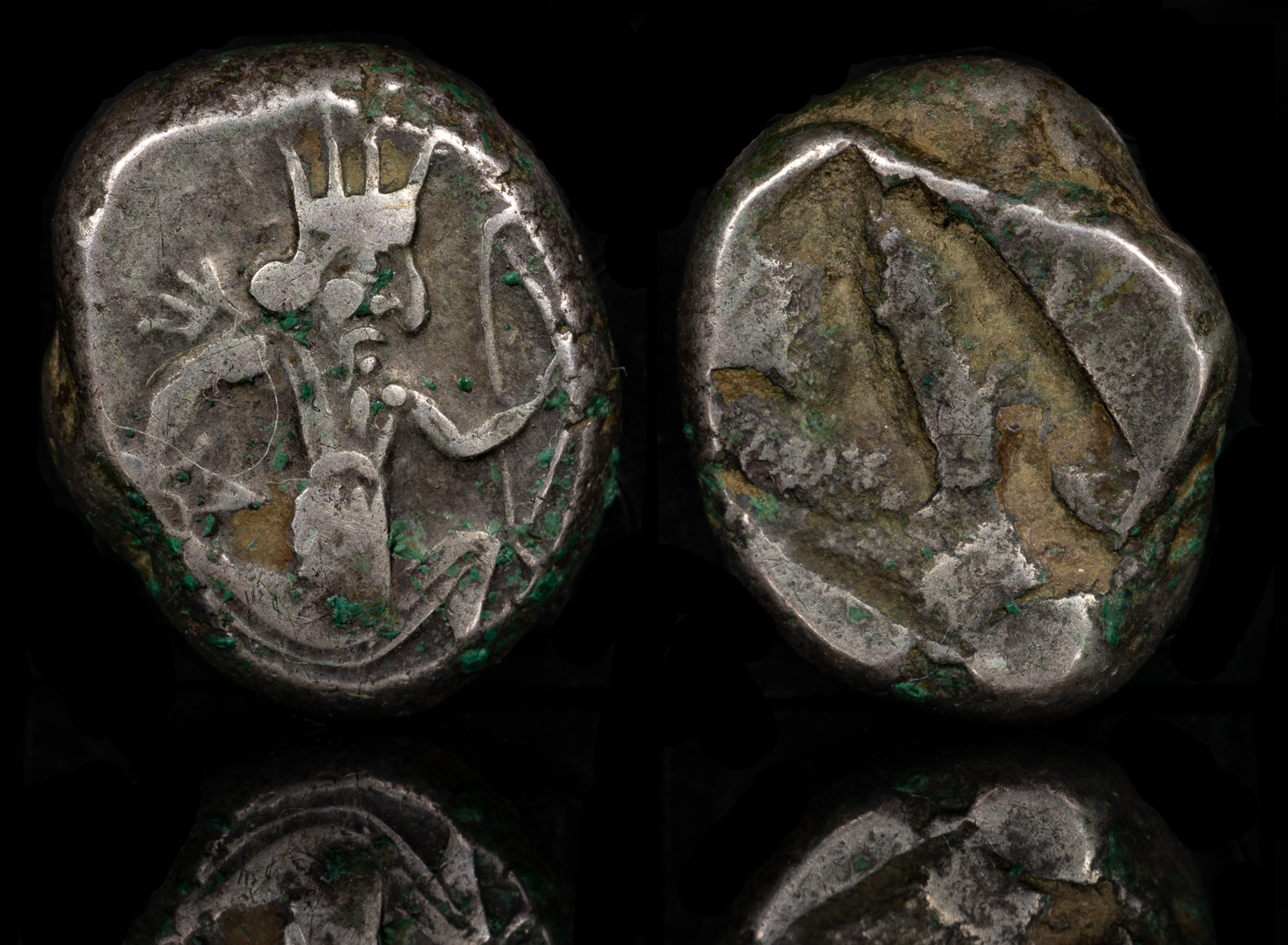Dagger
View All Tags
During the Archaic and Classical periods (circa 700–323 BCE), daggers continued to be used by both warriors and civilians in Greece. The design evolved, with more emphasis placed on functionality, as well as aesthetics. The “dory”, a long spear, often overshadowed the dagger in terms of battlefield prominence, but the dagger remained a close-combat weapon, particularly in urban settings or assassinations, where stealth was crucial. The “machaira”, a type of curved short sword, also became common, and many daggers during this time had distinctive decorative handles, with materials such as ivory, bronze, and wood used to create intricate designs that reflected both status and personal wealth.
Beyond warfare, daggers were also prominent in ritual and funeral practices. Greek funerary practices included the placing of personal items, including daggers, with the dead as part of burial rites. This suggests that the dagger held symbolic significance, likely associated with protection and status. In some cases, daggers were buried with warriors or individuals of high rank, reinforcing the idea that such weapons were deeply connected to identity and honor in Greek society.
One of the most famous historical uses of the dagger in ancient Greece is tied to the assassination of Philip II of Macedon, the father of Alexander the Great, in 336 BCE. His assassination was carried out by Pausanias of Orestis, using a dagger during a public celebration. This event, along with similar incidents in Greek history, illustrates the role of daggers in political intrigue and personal vendettas.
The use of the dagger gradually declined with the rise of larger and more advanced weaponry during the Hellenistic period and the Roman Empire. However, the legacy of the Greek dagger continued to influence weaponry in later civilizations, and its role in both personal defense and ceremonial contexts remained significant.
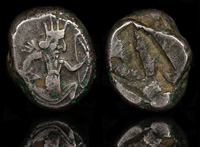
Darius III 375-340 BCE
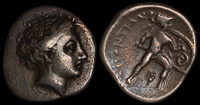
Lokris Opuntti 369-338 BCE
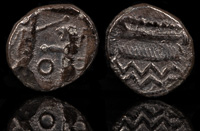
Samaria 375-333 BCE
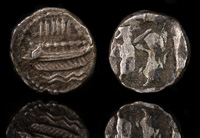
Straton of Sidon 337/36 BCE
